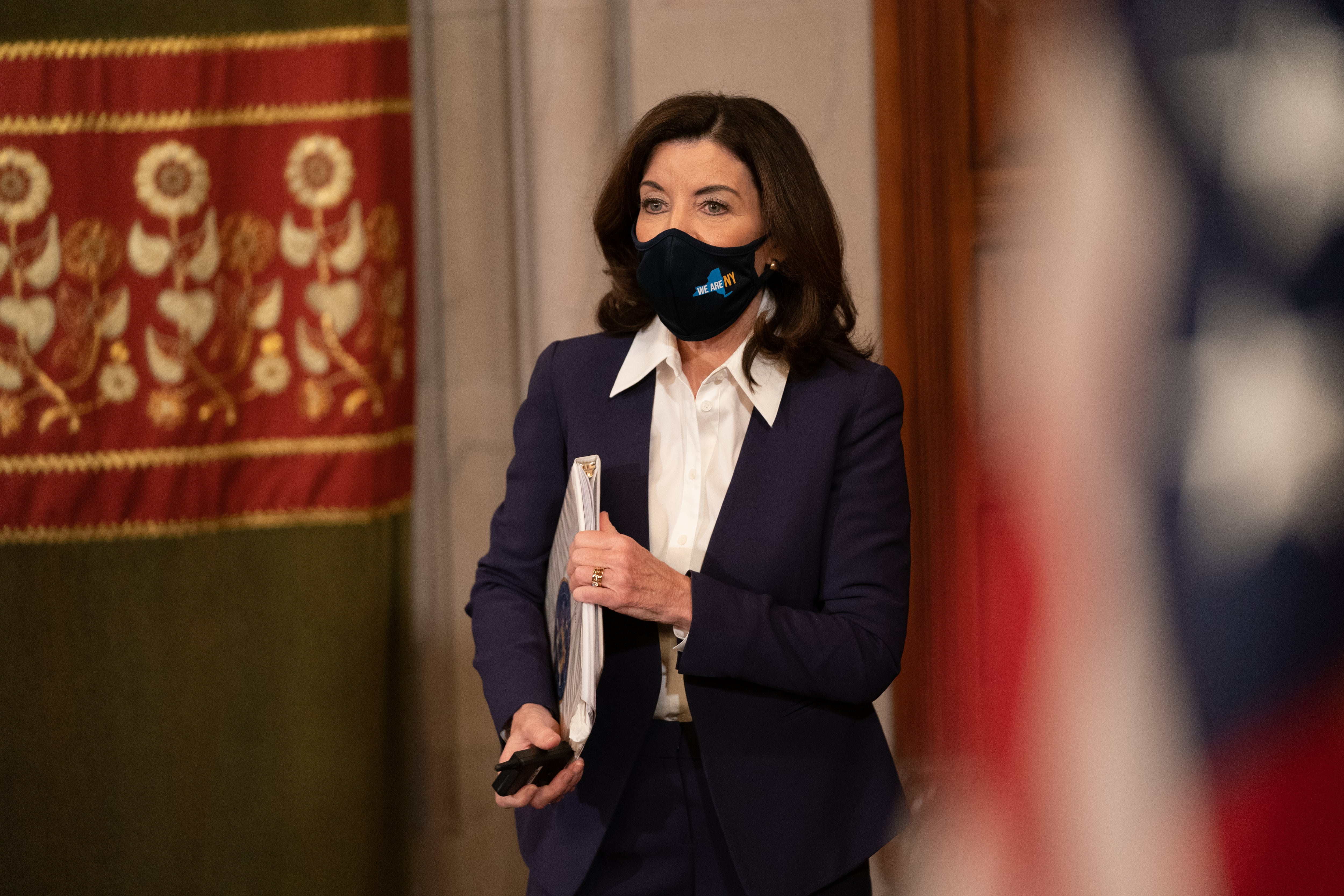Class sizes in New York City’s public schools will face stricter limits under a bill Gov. Kathy Hochul signed into law Thursday, despite protests from Mayor Eric Adams that it would be expensive to implement.
The bill represents a significant win for the city’s teachers union, which has repeatedly advocated to reduce class size but until now has struggled to push the policy across the finish line. It also had support from a constellation of educators and parents, who point to research that suggests smaller classes boost student test scores and can also lead to higher attendance and greater classroom engagement.
“For decades, New York City parents and teachers have been fighting for lower class sizes,” Michael Mulgrew, head of the city’s teachers union, said in a statement. “We now have something to celebrate.”
Starting September 2023, the legislation will significantly shrink the maximum number of students allowed in each classroom, which for most grade levels is currently set from 30 to 34 students (the limit for kindergarten is 25). Last school year, class sizes averaged 25 students as enrollment dipped.
The new law will cap classes at 20 students in kindergarten through third grade, 23 students for grades 4-8, and 25 students for high school classes. Physical education and classes for “performing groups” must be limited to 40 students.
The bill did not include an estimate of its cost, but city officials previously said it would take about $500 million to reduce class sizes in K-5 alone. Lawmakers did not attach any additional funding to the bill and have argued that the city should tap increased funding from the state.
The law requires schools Chancellor David Banks to work with the presidents of the unions for teachers and principals to create a plan to achieve the lower class sizes. The plan must be phased in from September 2023 to September 2028.
Hochul signed the bill Thursday, three months after state lawmakers overwhelmingly approved it — with a change. Instead of phasing in the class size requirements by September 2027, the city will have until 2028 to comply under an agreement with the legislature.
The governor’s signoff represents a defeat for Adams, who has struggled to curry political favor in Albany, and who objected to the steep cost. City Hall previously said that the bill’s passage could require cuts to other education programs.
Some parents also expressed worry that the bill will restrict the number of spots at some of the city’s most popular schools or require construction of new classrooms even as enrollment has fallen significantly during the pandemic.
One Manhattan principal who spoke on condition of anonymity to offer a frank opinion of the bill said he worries that his school doesn’t have space to accommodate smaller classes nor guaranteed funding to hire enough teachers to staff smaller classes.
“If there’s no additional funding to support it, what it just means is that you’re just shrinking my school. I don’t have enough classrooms,” the principal said.
The bill must be approved by the city and the unions. It allows for four exceptions “limited to space; over-enrolled students; license area shortages; and severe economic distress,” the bill says. Those terms aren’t clearly defined, but Queens Democratic State Sen. John Liu, who sponsored the bill, said the definitions should be left to the city and unions to hash out (and if they don’t agree after 30 days, the matter would go to an arbitrator.)
The bill says that class size reductions “shall prioritize schools serving populations with higher poverty levels,” though it does not define what that means.
In signing the bill, Hochul wrote that “implementation of this initiative will require significant strategic planning,” requiring the city to begin phasing in the new class sizes by next September.
The city must steadily shrink class sizes in at least 20% of its classrooms annually from September 2023 to September 2028, and must submit an annual report to the state documenting its progress. Any space-related exemptions must also include plans for building more seats.
After months of near-silence on the matter, Hochul recently said that she supported the bill but needed to ensure she was “protecting the state taxpayers.” However, there don’t appear to be any changes to the bill that would reduce its financial impact. Hochul’s office did not return a request for comment.
On Friday evening, Banks signaled the city would work to implement the mandate.
Reema Amin is a reporter covering New York City schools with a focus on state policy and English language learners. Contact Reema at ramin@chalkbeat.org.
Alex Zimmerman is a reporter for Chalkbeat New York, covering NYC public schools. Contact Alex at azimmerman@chalkbeat.org.






